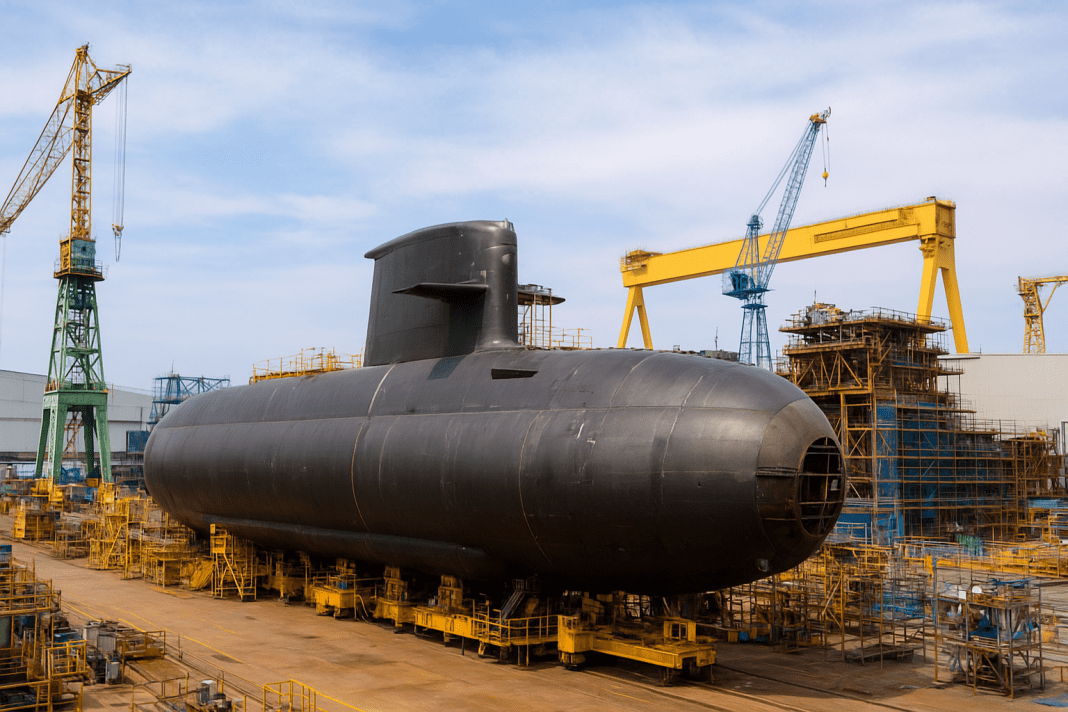In a significant display of international defense cooperation, Canadian Prime Minister Mark Carney visited Hanwha Ocean’s Geoje Shipyard in South Korea’s Gyeongnam Province on October 30. The visit marked a crucial moment in Canada’s ongoing “Canada Patrol Submarine Project (CPSP)”, an ambitious initiative aimed at acquiring next-generation submarines valued at up to 60 trillion Korean won.
Mark Carney Leads Historic Visit for Submarine Cooperation
The project seeks to purchase 8 to 12 diesel-electric submarines in the 3,000-ton class, with an estimated acquisition cost of 20 trillion won. Including a 30-year operation and maintenance contract, the total project value could reach 60 trillion won. If finalized, this agreement would become the largest-ever defense export deal for South Korean companies.
Mark Carney’s presence at the shipyard underlined Canada’s strong interest in South Korea’s world-leading shipbuilding and submarine technologies. The CPSP program reflects Canada’s plan to enhance its naval defense capabilities while fostering long-term cooperation with South Korean defense industries.
The Canadian Prime Minister, accompanied by David McGuinty, Canada’s Minister of National Defense, and Philip Laframboise, Canada’s Ambassador to South Korea, arrived at Geoje Shipyard by helicopter in the afternoon. The visit was part of Mark Carney’s official schedule during his trip to South Korea for the Asia-Pacific Economic Cooperation (APEC) Summit in Gyeongju.
Carney’s Inspection of Hanwha Ocean’s Advanced Shipyard
At the shipyard, South Korean Prime Minister Kim Min-seok, Vice Defense Minister Lee Doo-hee, DAPA Vice Chairman Kang Hwan-seok, and Hanwha Group Vice Chairman Kim Dong-kwan welcomed Mark Carney, highlighting the growing defense partnership between the two nations.
Mark Carney admired the scale and sophistication of Hanwha Ocean’s shipbuilding facilities, saying the “enormous scale of work” he saw from his helicopter tour deeply impressed him. Hanwha officials demonstrated their robotic welding systems and showcased the Jang Young-sil submarine, allowing the Canadian delegation to witness South Korea’s advanced production capabilities.
Canada eases trade stance with U.S. as Carney confirms removal of several tariffs
When Prime Minister Kim inquired about submarine hull construction, Hanwha’s Kim Dong-kwan explained that nuclear-powered submarines require wider, stronger hulls. Mark Carney attentively observed as engineers detailed modular building methods that enhance efficiency and precision.
A South Korean official said Mark Carney’s visit reflected Canada’s intent to assess both submarine technology and the broader shipbuilding industry, calling it a technical and diplomatic milestone. Photos from the event showed Mark Carney with Prime Minister Kim, David McGuinty, and Kim Dong-kwan, symbolizing deepening trust and cooperation between Canada and South Korea.
Leaders Mark Carney and Lee Jae-myung Strengthen Defense Ties
Earlier that day, Mark Carney held a high-level summit with South Korean President Lee Jae-myung in Gyeongju. The two leaders discussed the Canada Patrol Submarine Project (CPSP) and shared perspectives on strengthening defense and industrial cooperation.
President Lee emphasized South Korea’s readiness to support Canada’s rapid military modernization, stating that the nation’s technical expertise and production strength could help Canada achieve its naval goals efficiently. In response, Mark Carney praised South Korea’s world-class submarine and shipbuilding technology, expressing enthusiasm about witnessing it directly during his Geoje Shipyard tour.
Both leaders agreed that there was significant potential for joint development projects beyond submarines. A South Korean government source later revealed that Mark Carney and President Lee had decided to create a joint consultative body to facilitate detailed discussions on defense cooperation and technology sharing between the two nations.
Officials from the South Korean presidential office noted that Mark Carney’s itinerary was carefully designed to include an on-site inspection of South Korea’s defense production capabilities. They explained that the Canadian government views this collaboration not just as a procurement deal, but as part of a long-term strategic partnership between Ottawa and Seoul.
Fierce Fight Ends with Carney’s Ascent as Liberals Barely Hold Power
The day’s events underlined Mark Carney’s leadership in strengthening Canada’s defense diplomacy, showcasing how the Canadian Prime Minister is directly engaging with international partners to ensure that Canada’s future submarine fleet is supported by the best available technology.
The visit by Mark Carney to Hanwha Ocean’s shipyard thus stood as a defining moment in defense collaboration between Canada and South Korea, marking an important step in expanding mutual trust, industrial cooperation, and maritime security efforts between the two nations.

